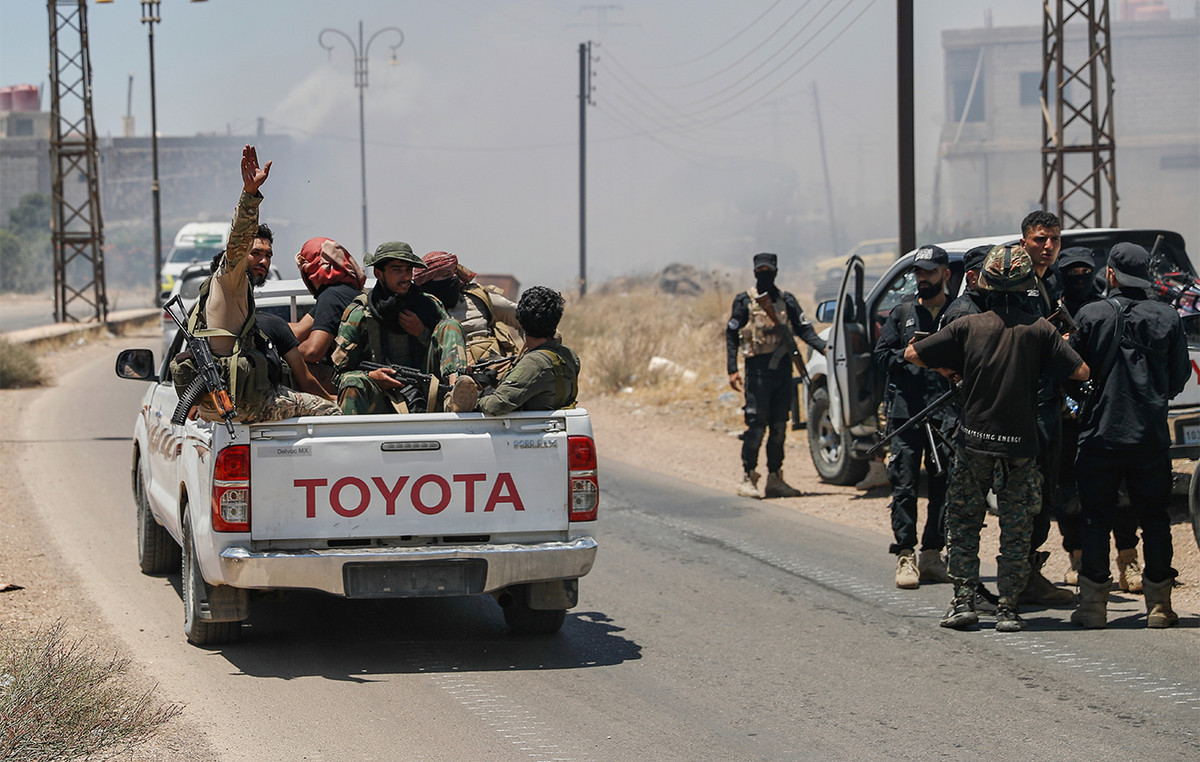Brazil has 77 confirmed cases of monkeypox – or monkeypox in children and adolescents aged 0 to 17 years, an incidence of 3.5% of infections. Of these, 20 cases (0.6%) were identified among children aged 0 to 4 years.
So far, Brazil has recorded 3,788 confirmed cases of the disease. The data were released by the Ministry of Health on Monday (22).
THE monkey pox it is usually a self-limiting illness, with symptoms lasting 2 to 4 weeks. Severe cases are more common among children and are related to the extent of exposure to the virus, the patient’s health status, and the nature of complications.
According to the World Health Organization (WHO), the case fatality rate can reach 11% in the general population and has been higher among young children. Previous immune deficiencies can also lead to more severe disease.
Children can contract monkeypox if they have close contact with someone who has symptoms, such as an infected family member. Data from previously affected countries show that children are typically more prone to serious illness than adolescents and adults.
However, the recent outbreak that affects multiple countries that are not considered endemic for the disease has a small number of children among those infected.
experts consulted by CNN explain the risks of monkeypox virus infection in children.
Immune system in formation
The defenses of the human organism improve according to growth and contact with the environment. The immune system, which fights harmful microorganisms such as viruses, bacteria and protozoa, remains in formation after birth.
According to researchers, one of the causes of the greater impact of monkeypox in children is the immune system still in formation.
“The monkeypox virus can have a greater impact, especially in immunosuppressed people and also in children, who do not have their immune system fully formed compared to the body of a healthy young adult. We have risk groups that raise an alert: children and immunosuppressed patients”, says pediatrician Carla Kobayashi, from Hospital Sírio-Libanês, in São Paulo.
The doctor Eliana Bicudo, from the Brazilian Society of Infectious Diseases (SBI) in Brasília, explains that infectious diseases can lead to systemic conditions and compromise the general state of health more significantly in children.
“The child or adult will have a fever, a drop in general health, they may have diarrhea. Systemic impairment greatly weakens patients and, in children, it is more accentuated by the smaller body volume. So, in a fever, the child dehydrates, for example”, says Eliana.
Risks of secondary infections
Children’s behavior in the face of injuries can also contribute to the emergence of secondary infections.
“Different skin lesions can merge into a single lesion and, as a result, lead to secondary infections. The distance from the child to the floor is very small and they cannot stay still for a long time on a bed or a sofa or with shoes”, says Eliana.
In general, secondary infections are caused by bacteria. “These lesions can undergo a secondary infection and progress to an infection of the cellular tissue of the skin, and the gateway is the wounds, those blisters that rupture and evolve with crusts. The kids rip the cones off,” he adds.
Doctor Eduardo Jorge da Fonseca Lima, secretary of the Scientific Department of Immunizations of the Brazilian Society of Pediatrics (SBP), says that in most cases, monkeypox infection in children does not require hospitalization.
“The treatment is outpatient and the child tends to evolve well. Few children will need to be hospitalized with this condition. The most important thing is early identification to prevent the spread of the disease. Unlike Covid-19, which transmission is respiratory, monkeypox is transmitted by close contact. The patient, adult or pediatric, must have bedding, cutlery and, preferably, an isolated room”, says Lima.

Symptoms and transmission of the disease
Monkeypox usually starts with a sudden, strong, intense fever. Symptoms include headache, nausea, exhaustion, tiredness and fundamentally the appearance of ganglia (swellings popularly known as “inguas”), which can occur both in the neck region, in the axillary region, and in the genital region.
The manifestation on the skin occurs in the form of blisters or lesions that can appear on different parts of the body, such as the face, hands, feet, eyes, mouth or genitals.
Pediatrician Carla Kobayashi says that the clinical picture in children may vary from one patient to another and is not yet completely defined. Skin lesions caused by the monkeypox virus can resemble other common childhood illnesses such as chickenpox and other viral infections.
“With the exception of the endemic Africa region, we are having very few cases in children reported worldwide. We are still designing the clinical picture, which is not yet typical. Parents, when identifying a child with a more persistent fever, enlarged lymph nodes and symptoms such as body pain, prostration and especially skin lesions, should seek medical attention immediately”, he says.
The specialist warns that the presentation of symptoms must be correlated with the epidemiological characteristics of the disease. Monkeypox virus is transmitted from person to person through close contact with injuries, body fluids, respiratory droplets and contaminated materials such as bedding. The incubation period can range from 5 to 21 days.
“If you have a history that this child has had contact with a suspected or confirmed case, or with someone who has been traveling through Europe and countries with a high incidence of the disease, if there is this epidemiology of close contact with people who may have the disease it is one more reason to be alert about the symptoms”, explains Carla.
Risks for pregnant women
The scientific information available at this time suggests that transmission of monkeypox during pregnancy may pose risks to the fetus. However, data on infection during pregnancy are limited.
It is not known, for example, if pregnant women are more susceptible to the virus or if the infection is more severe in pregnancy. Transmission of the virus can occur through the placenta from the mother to the fetus (which can lead to congenital smallpox) or during close contact at and after birth.
According to the WHO, more research is needed to understand the risks of smallpox during pregnancy and how the virus can be transmitted to the fetus in the womb or to the newborn during or after birth or during breastfeeding.
Therefore, the WHO recommendation is that pregnant women avoid close contact with anyone diagnosed with the disease. In the face of suspected exposure, medical attention should be sought for testing and implementation of necessary care.
The Ministry of Health published a technical note with specific guidelines on infection in pregnant women. According to the document, follow-up should be carried out according to the time of infection and the gestational period.
Source: CNN Brasil







